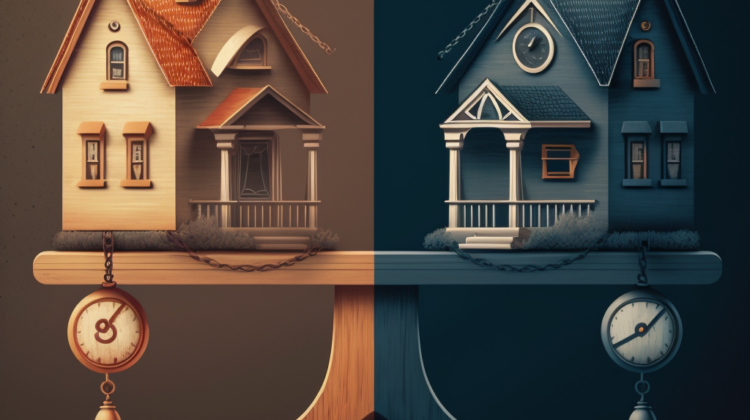
One of the most significant decisions you’ll have to make when considering a mortgage is whether to go with a fixed or adjustable-rate mortgage. While both options have advantages and disadvantages, it’s essential to understand the differences between them to make the best decision for your financial situation.
Fixed-Rate Mortgages
A fixed-rate mortgage is exactly what it sounds like: the interest rate on a loan stays the same throughout the life of the loan. This means your monthly payments will remain the same, making it easier to budget and plan for the future. Additionally, a fixed-rate mortgage provides stability and peace of mind, as you won’t have to worry about your mortgage payment increasing unexpectedly.
The downside of a fixed-rate mortgage is that you may end up paying more in interest over the life of the loan than an adjustable-rate mortgage. This is because fixed-rate mortgages tend to have higher interest rates than adjustable-rate mortgages, which can be a disadvantage if interest rates drop in the future. Additionally, if you plan to sell your home or refinance your mortgage before the end of the loan term, you may not benefit from the stability of a fixed-rate mortgage.
Adjustable-Rate Mortgages
An adjustable-rate mortgage, or ARM, has an interest rate that can change over time. Typically, an ARM will have a fixed rate for a set period, such as five years, before the rate adjusts based on market conditions. After this initial period, the interest rate will be tied to a benchmark index, such as the prime rate or the London Interbank Offered Rate (LIBOR).
The advantage of an ARM is that you may secure a lower interest rate at the beginning of the loan term compared to a fixed-rate mortgage. This can result in lower monthly payments and potentially save you money on interest over the life of the loan. Additionally, plan to sell your home or refinance your mortgage before the end of the fixed-rate period. You may take advantage of the lower rate without experiencing any downsides.
However, an ARM also comes with risks. If interest rates rise, your monthly payments will increase, making it difficult to budget and plan for the future. Additionally, the fluctuations in interest rates can be unpredictable, which can cause stress and uncertainty for some homeowners.
Finally, if you plan to stay in your home long-term, there may be better options than an ARM, as you could end up paying more in interest over the life of the loan compared to a fixed-rate mortgage.
There’s no one-size-fits-all answer when choosing between a fixed or adjustable-rate mortgage. Your decision will depend on various factors, including your financial situation, long-term plans, and risk tolerance. If you prioritize stability and predictability, a fixed-rate mortgage may be your best option. If you’re comfortable with some level of risk and want the potential for lower interest rates, an adjustable-rate mortgage may be a better choice. Ultimately, it’s essential to research, speak with a mortgage professional, and carefully consider your options before deciding.